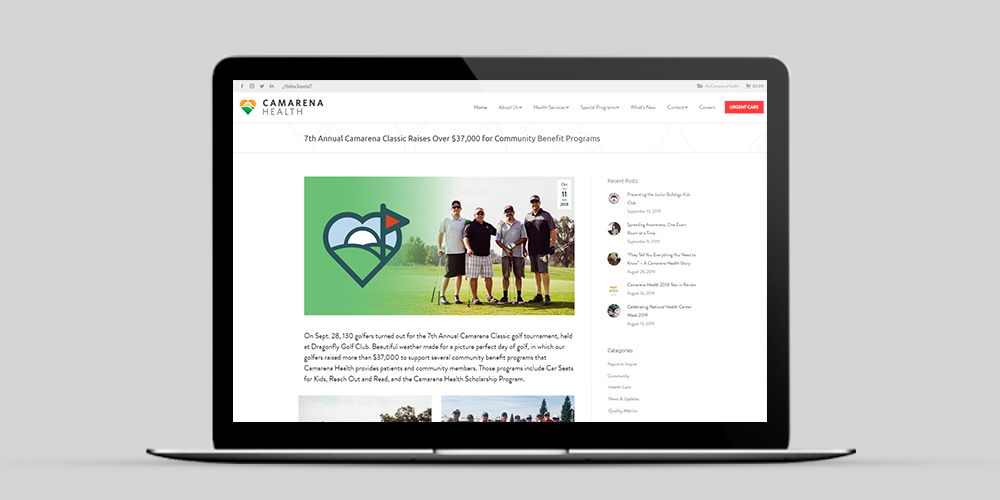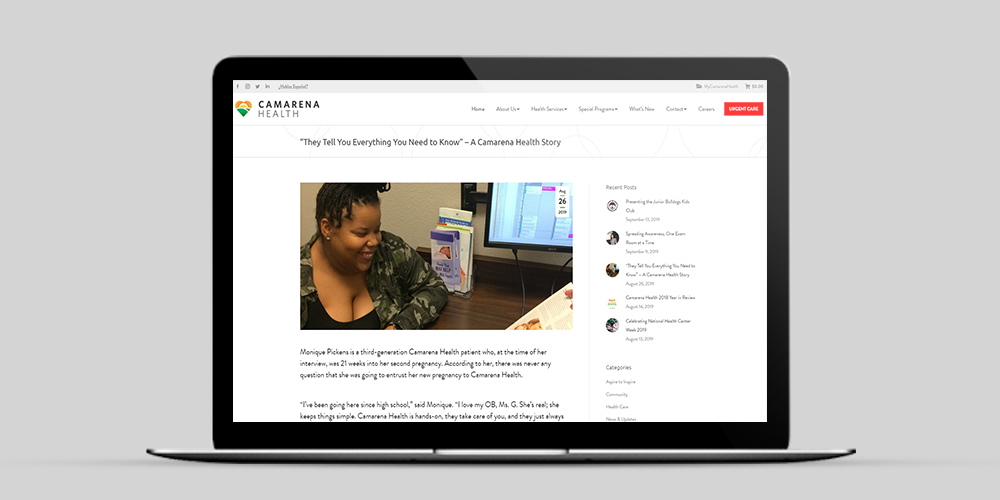Awhile ago, we ran you through the basics of content stacking – a strategy that allows you to re-use larger pieces of content by splitting them up into smaller chunks (that you can then publish across a variety of channels).
Because it’s been a minute since that first content stacking post, we figured it was time to revisit the concept and expand upon it – by showing you an example of content stacking in action. Below, I’ll walk you through REAL examples of both “bottom-up” and “top-down” content stacking. That way, you’ll see how far “one” piece of content can actually stretch.
Bottom-up and Top-down Content Stacking, Defined
You might be wondering why I feel the need to split the concept of content stacking into two categories, rather than talk about it as one thing. It’s because, to me, content stacking works in two directions. You can either:
- Combine many pieces of small content into one larger piece (“bottom-up” content stacking).
- Or, pull smaller chunks out of a larger piece (“top-down” content stacking).
As we created and published one of our clients’ recent annual reports, we employed BOTH versions of content stacking. We folded small, previously-published pieces of content into Camarena Health’s annual report (bottom-up stacking), and we broke original content we created “just for the report” out into supplementary blog posts, social posts, and emails (top-down stacking).
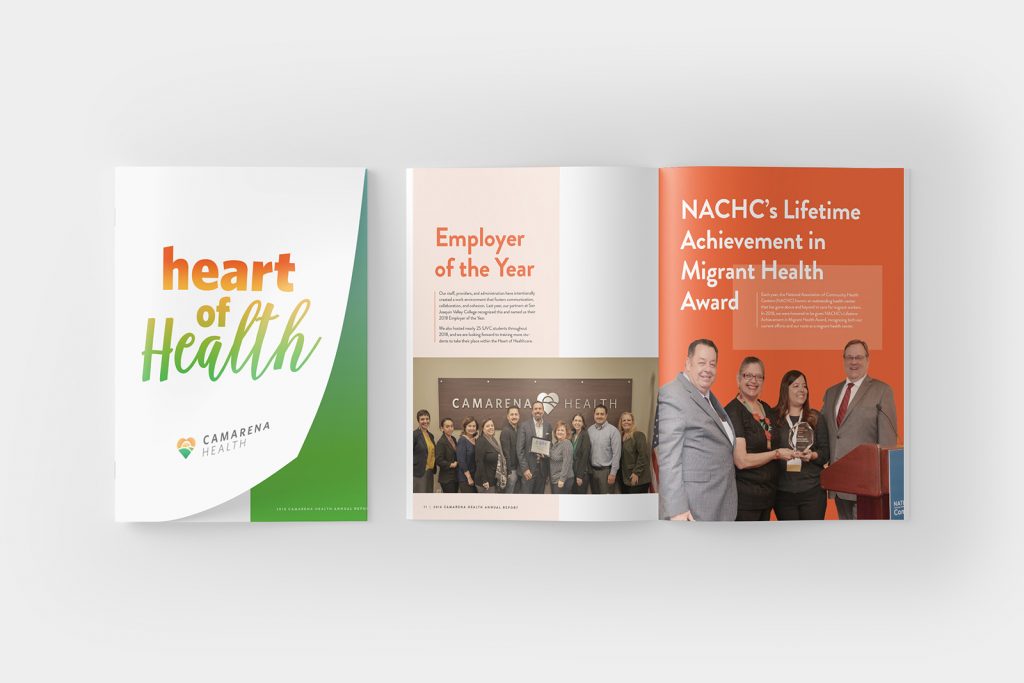
While the report itself is one, 50 page publication, we’ve used pieces of it within at least 40 ADDITIONAL pieces of content (that I can think of off the top of my head). Here are a couple examples of how we pulled old content into the report, and pulled new content out of it.
What Bottom-up Content Stacking Looks Like in Practice
Each year, Camarena Health holds a charity golf tournament to raise funds for their free-to-the-community benefit programs. And each year, we take stock of the golf tournament’s success.
Months before we began working on this year’s Camarena Health annual report, we published a blog post highlighting how much money this year’s Camarena Classic raised, as well as fun pictures from the event. We then shared that blog post via Camarena Health’s Facebook, LinkedIn, and email channels (which, yes, is an example of top-down stacking).
But we had one more way to re-use this year’s Camarena Classic content. When it came time to put together this year’s annual report, we pulled the blog post’s introductory paragraph into the report, as part of a two-page section about Camarena Health’s community events and fundraisers.
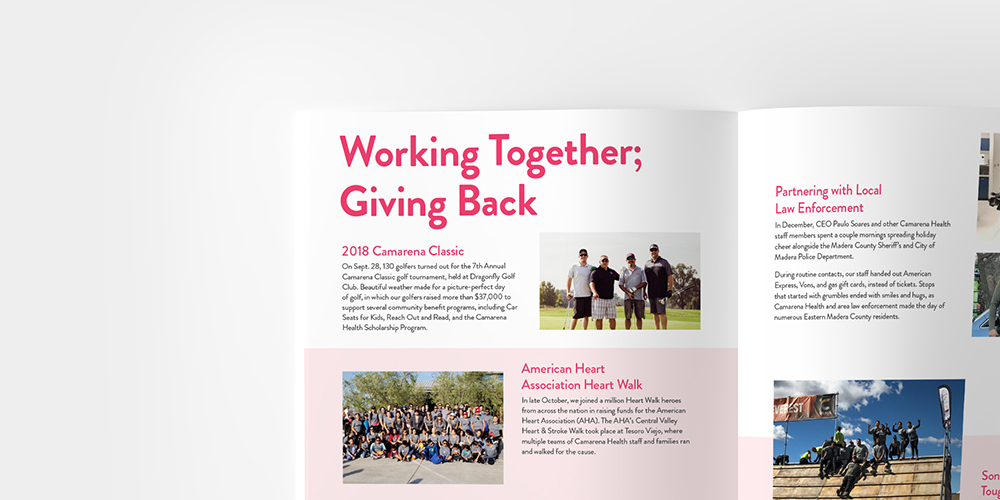
This is bottom-up content stacking in action. What had previously been a complete blog post became 1/6 of a two-page spread, sitting alongside other pre-written pieces of content that we pulled into the report.
By combining previously published pieces of content in this way, we saved ourselves (and Camarena Health) a bunch of work, and gave ourselves time to create some truly unique pieces of new content for other sections of the annual report.
What Top-down Content Stacking Looks Like in Practice
To provide those who read the annual report with meaningful pieces of new content, we took the time to interview a set of Camarena Health’s patients and a set of Camerena Health’s veteran providers. These interviews (which were super fun to conduct) appeared within a couple different sections of the report, making up seven pages of the 50 page document.
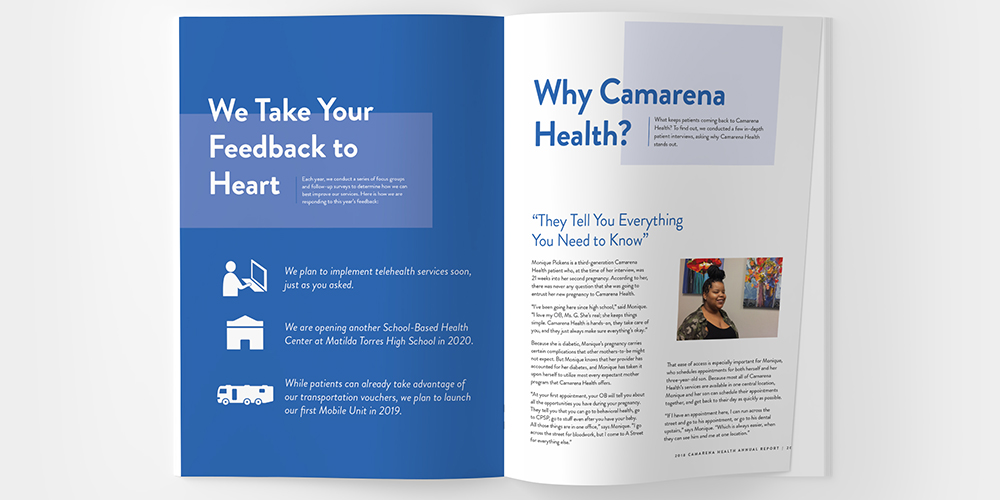
As I conducted these interviews, I realized we HAD to re-use them as blog, social, and email content. They were full of interesting information and insights that I knew Camarena Health’s audience would love (and that would fit well within our typical blog post format).
So, as Camarena Health’s physical annual report hit the printing presses, I began pulling each patient and provider interview over to their blog. These interviews gave us eight easy pieces of blog content to share with Camarena Health’s audience, as well as eight easy social posts and pieces of email content.
This is top-down content stacking in action. We pulled eight pieces of blog content out of Camarena Health’s annual report, and then shared that blog content with Camarena Health’s audience via even-smaller emails and social posts. In this way, we transformed seven pages of annual report content into 24 additional pieces of online content.
Share Your Content Stacking Stories with Us
I hope this post helped you understand what bottom-up and top-down content stacking look like – and how you can start putting both concepts to work for your business. Let us know if you’d like to see more real-life examples of content stacking, and if you have your own way of thinking about how to re-use content.

